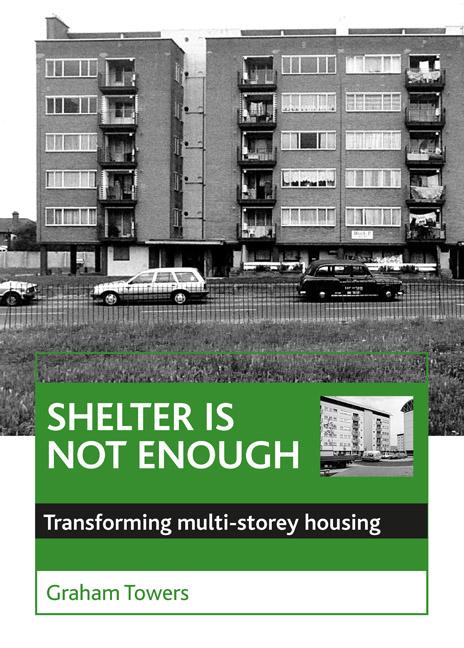Book contents
- Frontmatter
- Contents
- List of figures and tables
- Dedication
- Preface
- Foreword
- one Introduction
- two Forming the multi-storey legacy
- three Politics, economics and housing form
- four Social stigma and community action
- five Redeeming the estates
- six Facets of regeneration
- seven Building a model framework
- eight Prospects for transformation
- nine Ending the estate syndrome
- ten On broader horizons ...
- Bibliography
- Appendix: Case study research
- Index
four - Social stigma and community action
Published online by Cambridge University Press: 05 July 2022
- Frontmatter
- Contents
- List of figures and tables
- Dedication
- Preface
- Foreword
- one Introduction
- two Forming the multi-storey legacy
- three Politics, economics and housing form
- four Social stigma and community action
- five Redeeming the estates
- six Facets of regeneration
- seven Building a model framework
- eight Prospects for transformation
- nine Ending the estate syndrome
- ten On broader horizons ...
- Bibliography
- Appendix: Case study research
- Index
Summary
At first, the new multi-storey flats seemed to confer considerable benefits on their occupants. Compared with their old homes they were spacious, bright and clean with modern kitchens and bathrooms. Soon, however, the problems of multi-storey living became all too apparent, particularly for families with young children. Furthermore, the downside of the economies which made cheap multi-storey housing possible created increasing problems. The poor quality lifts frequently broke down, trapping many on the upper floors. The common stairs and access ways, neither public nor private, became vandalised and abused, further downgrading the already utilitarian public environment. The lack of communal facilities rapidly became a source of dissatisfaction. Within a few years of their completion, many multi-storey estates became ‘hard-to-let’, rejected by those for whom they were supposed to provide a release from bad housing.
At the same time, Victorian terraced housing was being revalued. There was growing awareness of the value of community life in old residential areas – and many, it seemed, were quite happy with their homes. Resistance to slum clearance grew. More and more local groups formed to fight comprehensive redevelopment and campaign for more sensitive and smallscale solutions. Faced with increasing management problems on multi-storey housing estates and with increasing resistance to them being built, public policy was forced to retreat. The building of high blocks and large-scale developments came to an end. There was an increase in rehabilitation and small-scale new housing. With this change came a new approach in which the views of local communities and those who would occupy new buildings became the key to successful housing solutions.
Living in multi-storey housing
In the early days of flat building a degree of choice was on offer. Most council tenants got their homes after a period on the ‘waiting list’ while their needs were prioritised through a points system. Those who wanted to stay near friends and family and in the inner city usually had to accept a flat. But those who wanted a house could usually get one, albeit some distance away on a peripheral estate or in a new town. As slum clearance became the main focus of housing policy the choices got less and less. The chief aim was to rehouse those living in clearance areas. As fewer and fewer houses were being built this increasingly meant moving to a flat.
- Type
- Chapter
- Information
- Shelter Is Not EnoughTransforming Multi-Storey Housing, pp. 65 - 86Publisher: Bristol University PressPrint publication year: 2000



